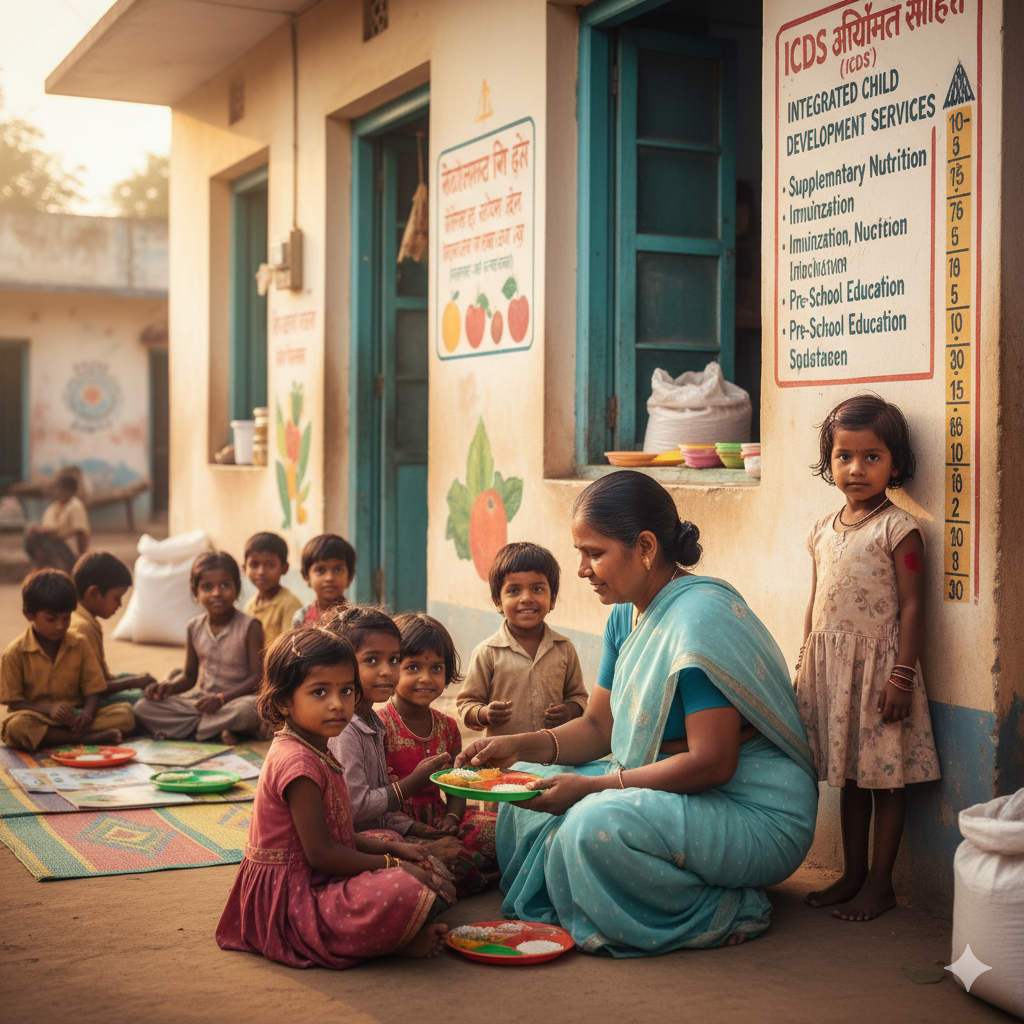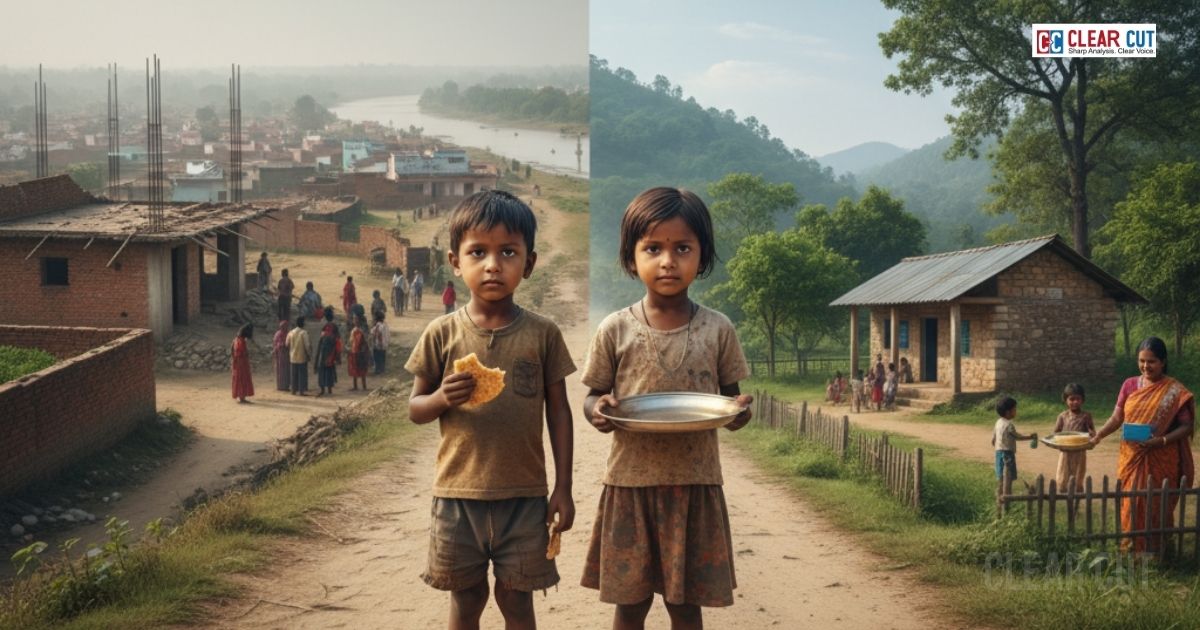In November 2000, Bihar and Jharkhand parted ways. The bifurcation birthed two siblings from one weary parent. Leaders on both sides pledged a brighter future. They promised equitable growth and stronger welfare. Child nutrition was at the heart of those vows.
Twenty-five years later, the promises echo faintly. Malnutrition still stalks the young in both states. The Integrated Child Development Services (ICDS) scheme, launched in 1975, remains the bulwark. But cracks run deep.
A shared legacy
At the time of separation, both states inherited a legacy of poverty. Their leaders, Rabri Devi in Bihar and Babulal Marandi in Jharkhand, vowed to prioritize human development. Planning Commission notes from the period recorded commitments to expand health, education, and nutrition interventions through ICDS. Convergence was the buzzword. The goal was clear: tackle undernutrition head-on.
Fast forward to 2025. Bihar lags. Jharkhand edges ahead. Both still falter.
Nutrition outcomes: a stubborn crisis
The Ministry of Health and Family Welfare’s NFHS-5 (2019–21) remains the latest national benchmark for child nutrition outcomes. In Bihar, 43% of children under five are stunted, 21% wasted, and 42% underweight. Anaemia grips 69% of children aged 6–59 months. Only 11% of children aged 6–23 months receive an adequate diet.
Jharkhand does only marginally better. Stunting affects 39.6% of children. Wasting is 22.4%, underweight 39.4%, and anaemia 67.5%. Exclusive breastfeeding rates are higher in Jharkhand at 76.1% compared to Bihar’s 63%, hinting at cultural strengths.
Both states remain well above the national stunting average of 35.5%. Both show rural disadvantage: Bihar’s rural stunting rate is 45%, Jharkhand’s 42.3%.
ICDS the frontline warrior
ICDS targets children under six, pregnant women, and lactating mothers. Services include supplementary nutrition, health check-ups, growth monitoring, immunisation, and pre-school education. Norms are simple: one Anganwadi Centre (AWC) for every 400–800 population, roughly translating to one centre for about 80 children under six. Each centre typically has one Anganwadi Worker (AWW) and one Helper (AWH).

Nutrition entitlements stand at 500 kcal and 12–15 grams of protein per child per day, and 800 kcal with 20–25 grams of protein for severely malnourished children.
Bihar: scale without depth
Bihar has 1,17,076 sanctioned AWCs, of which 1,08,451 are operational – a gap of about 7.3%, down from 13% in 2018–19. But coverage still lags the promise.
- SNP coverage: 54.8% of eligible children (~9.2 million) and 51.6% of pregnant and lactating women.
- Staffing: AWW vacancy at 9.2%, AWH at 12.1%, supervisory posts at 34.6%.
- Infrastructure: 92.3% AWCs have drinking water; 77% have functional toilets.
But these averages mask district-level stress. In Nalanda, one AWC often serves 120 children. One worker doubles as a helper. Nutrition packets arrive late, especially during monsoons. Many centres still run out of school buildings with little play space.
Jharkhand: smaller base, better uptake
Jharkhand operates on a smaller scale. 40,312 sanctioned AWCs, with 38,432 operational (gap of 4.6%). But its SNP coverage is stronger: 61.3% of eligible children (~3 million) and 56.7% of pregnant and lactating women.
- Staffing: AWW vacancy at 3.1%, AWH at 4.2%, supervisory vacancies at 27.8%.
- Infrastructure: 94.1% AWCs have drinking water; 81% have toilets.
Ranchi district averages 70 children per AWC. Gumla struggles with 100-plus. But overall, staff vacancies are lower, and uptake is higher than Bihar. NFHS data showed higher breastfeeding rates as well.
Budgets and priorities
National allocation under Saksham Anganwadi and POSHAN 2.0 in 2024–25 stands at ₹20,554 crore. Bihar’s ICDS allocation is about ₹3,126 crore, with an 85% utilization rate. Jharkhand gets about ₹1,187 crore, with 91% utilization.
Bihar’s budget is larger because of its size, but fund flow remains uneven. In Jharkhand, utilization has been steadier. Both states have seen gradual improvements in infrastructure.
Ground realities remain
Even with improved coverage, structural weaknesses persist. Supervisory staff shortages remain stubborn. AWWs continue to shoulder non-core duties. Election work, surveys, and local administrative chores. Supply chain delays disrupt Take-Home Ration (THR). In tribal Jharkhand, transport and storage remain weak links.
Many centres still fail to provide balanced nutrition. Cereals dominate. Vegetables and proteins are sparse. Around 79% of unused THR is reportedly diverted for livestock feed in parts of Bihar.
The promise revisited
When the two states separated, their leaders spoke of shared progress. Today, Jharkhand shows better coverage and lower vacancies, but Bihar retains the larger system. One leans on efficiency; the other on scale.
The commitments of 2000 were half-met. Floods, migration, and funding delays weigh Bihar down. Remoteness, infrastructure gaps, and supply constraints slow Jharkhand.
The path forward is clear: convergence. MGNREGA for AWC construction. NHM for health linkages. Full digitization of Poshan Tracker. Capacity building of frontline workers.
Twenty-five years on, the tale of two siblings is unfinished. Their children wait for promises to turn real.
Clear Cut Health Desk
New Delhi, UPDATED: Oct 16, 2025 01:13 IST
Written By: Paresh Kumar




